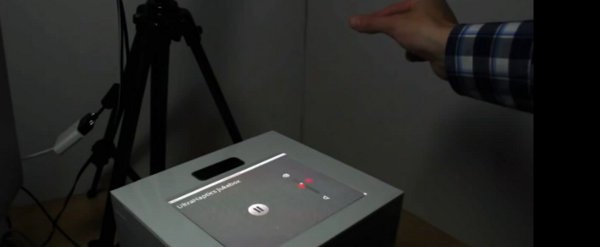
Bristol University researchers have developed a ‘forcefield’ that mimics the feel of objects in mid-air by using sound alone.
The breakthrough is different from other technologies that use vibrations produced by electricity, instead allowing users to ‘feel’ the the objects’ different properties without really touching anything.
According to Bristol’s Interaction and Graphics (BIG) research group, the new UltraHaptics system uses ultrasonic transducers – small speakers which produce waves of ultrasound – to create an invisible layer of ultrasonic vibrations above a display.
This creates small tactile sensations in mid-air directly on the user’s hands, making them ‘feel’ the object without touching it.
The process, called haptic feedback, creates a tactile sensation for virtual objects – much in the way some smartphones vibrate when the user touches a virtual button.
BIG research group member and student Tom Carter said: "Our goal was to integrate haptic feedback into these systems without sacrificing their simplicity and accessibility.
"To achieve this, we have designed a system with an ultrasound transducer array positioned beneath an acoustically transparent display.
"This arrangement allows the projection of focused ultrasound through the interactive surface and directly onto the users’ bare hands.
"By creating multiple simultaneous feedback points, and giving them individual tactile properties, users can receive localised feedback associated to their actions."
Several systems such as Microsoft’s Kinect sensor and the LeapMotion have focused on technology that track a user’s hand and body motions to enable interaction with a computer interface, but they did not have any feedback, bar audio or visual alerts via a display screen.






